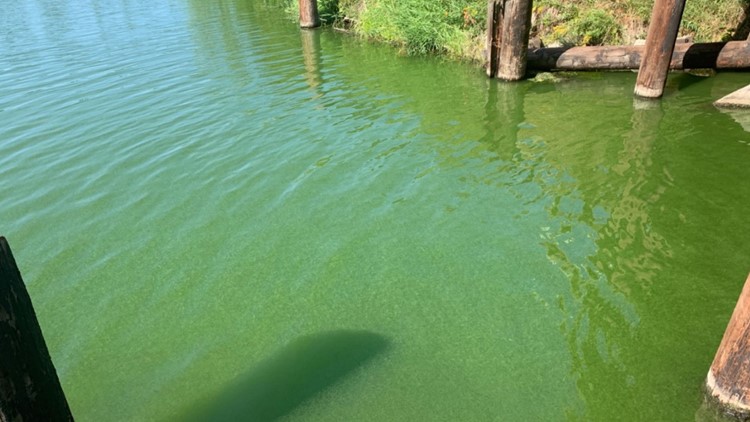SANDPOINT, Idaho — Blue-green algae has been discovered in Boyer Slough near Sandpoint, according to the Panhandle Health District (PHD).
This sighting has prompted PHD and the Idaho Department of Environmental Quality (DEQ) to issue a public health advisory for the area.
On Aug. 18, the DEQ found widespread cyanobacteria scum along the shoreline and the bloom is in the entire body of water and reaches to where it meets the mouth of Pend Oreille Lake.
They advised lake visitors to look out for water that appears discolored or murky. The appearance of the HAB can be unsightly, often presenting as discolored water, streaks or globs of scum and causing thick green mats along lake shorelines. This algae can spread or move with wind and water currents.
The DEQ said in a press release that they are taking additional steps to monitor the blooms that are becoming more frequent during the summer months.
This includes:
- Increased monitoring and site visits as high-risk sites are identified
- Performing on-site rapid testing as needed for the most commonly encountered cyanotoxin
- Using satellite imagery to characterize and monitor existing and potential blooms
- Collaborating with EPA and CDC laboratories to advance cyanotoxin species detection
- Communicating with the state’s public health districts, state toxicologists, and veterinarians
- Continuing to respond to inquiries and questions from the public
- Updating the Cyanobacteria Harmful Algal Bloom map with new monitoring data
Symptoms of exposure to algal toxins vary according to exposure. Symptoms include rashes, hives, diarrhea, vomiting, coughing and wheezing. More severe symptoms that could affect the liver and nervous system may result from ingesting the water. If symptoms persist, consult with your health care provider.
If visitors have swam in the water containing a HAB, it is recommended to wash off with fresh water.
The algae is common to Washington and Idaho and it normally develops in the late summer and early fall because of warmer waters.



